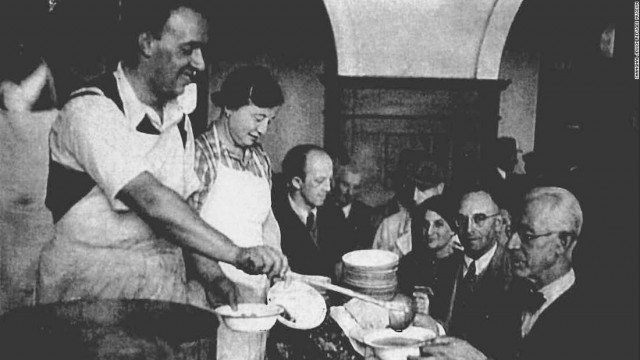“-//W30//DTD W3 HTML 2.0//EN”>
|| Return to theCybrary ||
INTRODUCTION
Lately, many righteous gentiles have been honored by the Jewish community forsaving the lives of Jews before and during the Holocaust. Included among themwas the Japanese consul in Kaunas in July 1940, Chiune Sugihara. This is thestory of Jan Zwartendijk, the man who made it possible for Sugihara to dowhat he did. For the first time since World War II, he is being thanked, posthumously, for what he accomplished during those dark days.
The Story of Jan Zwartendijk and his Legacy to Judaism
by David Kranzler
Author of “The Nazis, the Japanese and the Jews”
Submitted by Jeanette Friedman
I n September 1939, Hitler conquered thewestern part of Poland, whileStalin, his ally (Soviet-German Pact), occupied the eastern part. As aresult, over 10,000 Polish refugees fled to Vilnius (Vilna),Lithuania-which was neutral at the time. The refugees were overwhelminglyyoung men of draft age. They represented the cream of Poland’s Jewishintellectual elite and ran the full gamut of the Jewish ideologicalspectrum. There were leaders of various labor (Bund and Zionist) parties;writers; actors; and some of the world’s outstanding rabbis, talmudicscholars and almost 3,000 Talmudic graduate students.
When the Soviet Union annexed Lithuania in late July 1940, fear seized theOrthodox Jewish community-which realized they would not be permitted toobserve their religion and would be actively persecuted for it underCommunism. During this transition period, they sought whatever means theycould to escape to the free world. Sweden, the only accessible neutral incountry in region, refused to accept refugees.
Two Dutch students (Nathan Gutwirth and Chaim Nussbaum) from the TelsheYeshiva, which was located in Lithuania, asked the acting Dutch consul inKaunas (Kovno), Jan Zwartendijk (the Philips Corp. director in Lithiania)if he could help them get to Curacao, a Dutch island in the West Indies. TheNetherlands had been occupied by the Nazis in May 1940. Zwartendijk hadbeen asked by the Dutch ambassador to replace the Dutch consul in Kaunas, aNazi sympathizer.
From his experience in Hamburg in the 1930s, Zwartendijk understood howgrim the situation was for the Jews. He contacted L.P.J. Decker, theDutch Ambassador in Riga, for advice and received a note saying that: “Novisas were necessary for Curacao. The governor has exclusive authority toissue landing permits to foreigners, a power he rarely exercises.”
The two students asked Zwartendijk to write only the first sentence intheir passports. Zwartendijk agreed and entered the shortened statement inthem. These now became “Curacao End-Visas.”
Gutwirth and Nussbaum then took their “visa’ed” passports to ChiuneSugihara, the Japanese consul in Kaunas, who issued them transit visasvalid for ten days in Japan. With the Dutch and Japanese “visas,” thestudents-being foreign nationals-were able to obtain Soviet exit visas.This allowed them to travel to Vladivostock via the Trans-SiberianRailroad, and from there, by boat to Japan.
The young men realized that they were on to something that might work forother Orthodox refugees caught in Lithuania. They went back toZwartendijk, who had a rubber stamp made that said “No Visa to CuracaoNecessary.”
Word spread among the refugees in Vilna and hundreds rushed the Dutchconsulate in Kaunas. Zwartendijk stamped the by-now invalid Polish andLithuanian passports at breakneck speed, all day, every day. Other peoplecreated forgeries of the already “questionable” visas.
From there they went to see Sugihara, the Japanese consul, who knew thevisas weren’t “real,” but issued transit visas to the Jews anyway. Peoplewho arrived in Japan sent their visas back to relatives still in Vilnius.Zwartendijk churned out 1,200-1,400 visas in two weeks (some passportscovered whole families) and Sugihara issued close to 2,000 (because ofaccepted forgeries). Fully aware of the spuriousness of the documents,Japan allowed every Jew who used them to land. All of them were sponsoredby the Jewish community in Kobe, Japan.
Neither Zwartendijk or Sugihara were professional diplomats.Zwartendijk was businessman who was asked by Decker to replace a Nazisympathizer. Sugihara was an intelligence officer. The combined effortsof these two quasi-diplomats lasted less than three weeks.
The importance of this rescue was highlighted in October 1940, whenHimmler issued an order prohibiting emigration of Jews from theNazi-occupied part of Poland. He did so on the grounds that Jewishimmigration to neutral countries such as the USA was alreadyrestricted, and that if Polish Jews (“Ostjuden”) were toobtain immigrationvisas, there would be fewer visas available to German Jews. In addition,Eastern European Jews, because of their Orthodoxy, were a source of Talmudteachers and rabbis sought by American Jewish religious institutions whowere “eager” to sponsor them.
The religious institutions in America, Himmler wrote, saw in the “Ostjuden”a valuable element in their struggle for a spiritual Renaissance ofJudaism-which would also lead to American Jewish efforts against Germany.(The USA was neutral until Germany ?declared war against the USA onDecember 11, 1941.)
When the Soviets closed the consulates in Kaunas on August 3, Zwartendijkwent back with his family to Nazi-occupied Holland, where he continued as aPhillips executive. There is a possibility that he became a British contactfor the Dutch underground. Decker, as a professional diplomat, was admittedto Sweden.
Sugihara was able to stay a few more weeks, and continued to ?hand outtransit visas even after he was forbidden to do so by his superiors. FromKaunas, where he was sent to see if the Germans would invade Russia, hewas sent to Prague, then Koeningsberg and was finally recalled to Berlin.
By the end of winter 1940-1941, between 2,100 and 2,200 Jewish refugeesentered Japan, where they remained for three to eight months. BeforeDecember 7, 1941, more than half of them were able to travel on to freecountries in the western hemisphere.
The remaining 1,000 were transferred to Hong Kew, in the Japanesesection of Shanghai, where they survived the war. They included the entireYeshiva of Mir, the only yeshiva to survive the Holocaust intact, and anumber of pre-eminent Talmudic scholars from Telshe Yeshiva, twolegendary institutions of Jewish learning. This entire group eventuallyhad a profound effect on the rejuvenation of Judaism in the post-war world.
Go to the Top of the Page || Returnto the Cybrary





